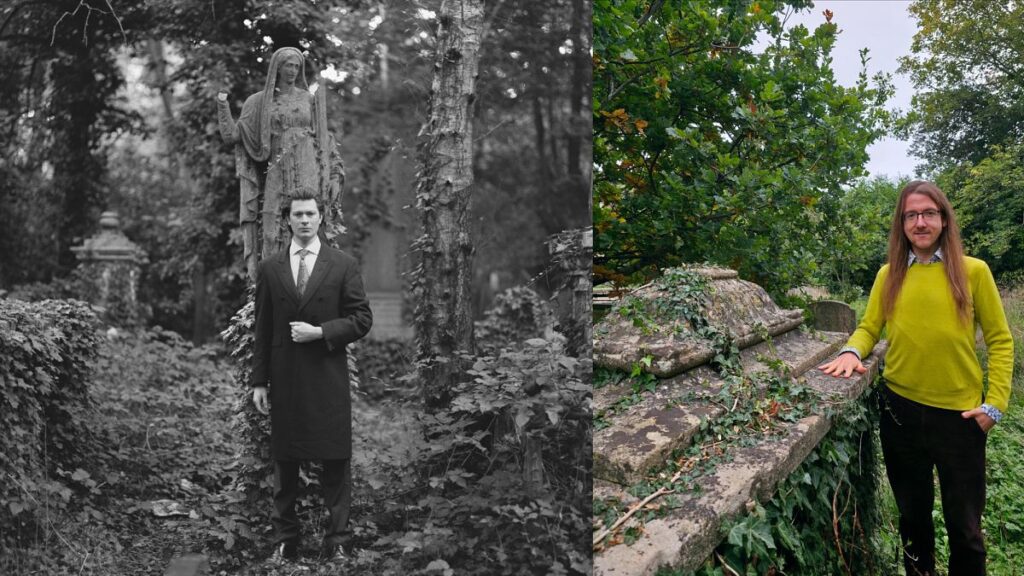Graveyards could become the latest travel trend to spread across Europe, as tourists look to liven up their usual itinerary of museums and TikTok-famous coffee shops.
It might sound macabre and slightly spooky, but for taphophiles – those with a strong interest in cemeteries and epitaphs – roaming around tombstones offers a unique insight into a country’s culture and history.
Even travel experts acknowledge the growing popularity of graveyard tourism, arguing it provides a rare chance to “rebel against tick-box travel” as overtourism plagues much of the continent.
Graveyard tourism: What’s the appeal?
“Graveyards are not scary or ghoulish places,” says Jono Namara, a filmmaker and self-proclaimed taphophile who has visited hundreds of burial grounds across Europe.
Growing up with a fascination with all things history and gothic, Namara has turned his morbid love into a social media series documenting how the dead continue to shape the living through the “monuments and mysteries” they leave behind.
Some of his favourite grounds include London’s Magnificent Seven – where notable figures such as Karl Marx, Emmeline Pankhurst, and Sir Henry Tate are buried – Père Lachaise in Paris, the resting place of Oscar Wilde, Jim Morrison, and Édith Piaf, and Laeken in Brussels.
“Next on my list is the Zentralfriedhof in Vienna, where composers and poets share eternal rest,” Namara tells Euronews Travel.
Describing graveyards as “open-air museums” that are shaped by art, architecture, and belief, Namara believes such sights provide the perfect combination of culture, quiet, and curiosity.
A break from the crowds and ‘clichés’.
With record-breaking levels of tourism hitting European countries like Spain and Greece hard this year, such a trifecta can feel rare to find.
It’s one of the main reasons why graveyard tourism is coming to life, and can tell a city’s story “without the crowds or clichés”.
“Cemeteries are usually tucked into real neighbourhoods, away from the coach tours and souvenir shops,” Namara adds.
“In searching for them, you wander through the everyday fabric of a place. You see how a culture remembers its dead, and in doing so, you understand how it chooses to live.”
The best graveyards to visit in Europe
Dr Dan O’Brien is also a graveyard enthusiast and works as a death historian at the University of Bath in the UK.
Lured into the world of burial grounds due to his love of walking and interest in history, O’Brien started exploring sites in between work meetings.
Now, he says, finding new graveyards has become “quite addictive”, and he’s developed a particular passion for spotting memento mori on headstones (the skulls and bones which symbolise the inevitability of death).
Some of his favourite sights include Greyfriars Kirkyard in Edinburgh and Tower Hamlets in London, as well as Key Hill and Warstone Lane in Birmingham.
The taphophile points out that many of these sights are near some of Europe’s most popular attractions, but offer a moment of calm away from the crowds.
“I would also make a special mention of Venice’s San Michele cemetery, a working cemetery on an island – it’s a quiet, peaceful spot near the busy tourist areas, perfect for a stroll or a sit,” he adds.
“The tiny pet cemetery in Bath’s Parade Gardens is also a treat and hidden in the very heart of the city!”
Next on his bucket list are the historic cemeteries around New Orleans, especially St Louis No.1, which is the oldest in the area.
‘Rebelling against tick-box travel’
Many tourists may still feel uncomfortable at the idea of visiting a graveyard, but for those brave enough to give it a try, they may stumble across a newfound interest.
Catherine Warrilow, a tourism brand strategy expert at The Plot, says more people are taking “journeys of self-discovery” on their travels now, with many wanting to reconnect with people’s stories.
“The interest in visiting graveyards is increasing – and I think it’s a really positive connection with ancestry and regional history,” she adds.
“Many of the people laid to rest in our cemeteries fundamentally shaped local culture and history – and are unexpectedly beautiful places.”
The expert argues that Gen Z, especially, are starting to “rebel against tick-box travel” and start to visit places that allow them to truly stop and reflect. And it’s not just graveyards that offer this.
“As we get comfortable with the need to take ownership in off-setting overtourism, travellers are actively looking for smaller, lesser known stop-offs – such as chapels, ancient burial sites and historical ruins, as well as locations of folklore, myth and legend,” Warrilow says.
Read the full article here

